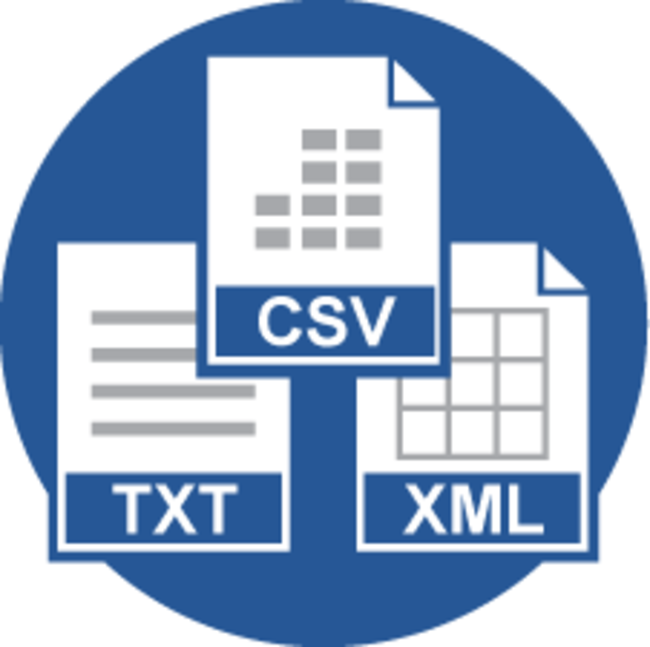Open Data: Treasury Could Better Align USAspending.gov with Key Practices and Search Requirements
Fast Facts
Open data—like the spending data the Treasury Department shares on USAspending.gov—can increase transparency to promote public trust in government. Because the data have broad appeal among users such as grant recipients, Congress, and the public, it's important to make the data as usable as possible.
We identified 5 key practices for transparently reporting government data. For example, websites should facilitate data discovery by presenting the data in a way that allows easy exploration, such as through a search function.
We recommended steps to better align USAspending.gov with key practices and other requirements.

This is a photograph of a computer screen showing the website USAspending.gov.
Highlights
What GAO Found
GAO identified five key practices for transparently reporting government data, as well as actions to implement each practice. These key practices and actions can assist managers of open government data programs in the transparent presentation of their data. Open data are information that can be freely used, modified, or shared by anyone for any purpose.
USAspending.gov aligns with several key practices. However, the Department of the Treasury (Treasury) has not fully aligned the website with all of the key practices, the requirements of the Federal Funding Accountability and Transparency Act of 2006 (FFATA), and Office of Management and Budget (OMB) guidance (see table.) FFATA, as amended by the Digital Accountability and Transparency Act of 2014 (DATA Act), directed Treasury to develop and manage USAspending.gov to provide detailed information on federal spending.
USAspending.gov Alignment with Key Practices and Other Requirements
|
Key practices |
USAspending.gov characteristics |
|
Provide free and unrestricted data |
Consistent with this key practice, USAspending.gov, as a general matter, provides unrestricted data to the public and Treasury has made all the data available for free. In the course of its work, GAO found that users could only download the complete database after registering for an account with a third-party database host and incurring a charge. In July 2018, in response to GAO's inquiries, Treasury provided an option for users to download the entire database for free without creating an account. |
|
Engage with users |
Consistent with this key practice, Treasury conducts user research and engages with users of USAspending.gov online and in person. For example, Treasury officials said they have conducted more than 150 interviews with users. Treasury officials also told GAO that they have directly engaged with various audiences about the website through a hackathon and a partnership. |
|
Provide data in useful formats |
Consistent with this key practice, USAspending.gov provides detailed, machine-readable data in standardized formats and includes several options for downloading the data. However, Treasury lacks a process to ensure that any new pages added to the website are hosted on a .gov domain and encrypted with the secure HTTPS protocol required by OMB. Without such a process Treasury does not have assurance that new pages added to the website meet federal security requirements. |
|
Fully describe the data |
USAspending.gov does not fully reflect this key practice because while it discloses data sources and timeliness, the website does not provide structured metadata. Providing metadata—structured descriptive information about the data—is also an OMB requirement. In addition, while OMB guidance provides that agencies must apply open licenses, the website does not provide comprehensive licensing information for the data. As a result, users may not have the information they need on how the data can be used. |
|
Facilitate data discovery for all users |
Consistent with this key practice, Treasury facilitates data discovery by providing tools such as interactive maps and visualizations to help users interpret the data. However, users cannot search for city and program source (the unique accounting code used to track federal spending) as required by FFATA. As a result, users may be unable to find certain financial or geographic information related to recipients or federal programs. |
Source: GAO analysis of USAspending.gov. │ GAO-19-72
Why GAO Did This Study
Open data can foster accountability and public trust by providing citizens with information on government activities and their outcomes. It can also promote private sector innovation. The DATA Act requires that the federal government collect and present open data on roughly $4 trillion in annual federal spending. The DATA Act also includes a provision requiring GAO to review its implementation.
This report (1) identifies key practices for transparently reporting government data; and (2) evaluates the extent to which USAspending.gov is consistent with those key practices and other requirements. GAO developed the key practices by systematically evaluating and synthesizing information from literature on open data, as well as interviews with open data experts and good governance groups. GAO used these key practices as well as existing federal website standards and applicable laws to evaluate USAspending.gov.
Recommendations
GAO is making five recommendations including that Treasury (1) establish a process to ensure that additions to USAspending.gov meet security requirements, (2) provide structured metadata and licensing information on the website, and (3) ensure that users can search for awards by city and program source as required by law. Treasury agreed with GAO's recommendations.
Recommendations for Executive Action
| Agency Affected | Recommendation | Status |
|---|---|---|
| Department of the Treasury | The Secretary of the Treasury should establish a process to ensure all pages on the USAspending.gov website use the secure HTTPS protocol, consistent with OMB requirements. (Recommendation 1) |
In November 2018, the Department of the Treasury (Treasury) revised its process for monitoring pages on USAspending.gov to ensure that all pages use the secure HTTPS protocol. In August 2019, Treasury provided documentation showing that this process had been applied to all pages on the website.
|
| Department of the Treasury | The Secretary of the Treasury should establish a process to ensure all content on USAspending.gov is available from a government domain, consistent with OMB requirements. (Recommendation 2) |
In November 2018, the Department of the Treasury (Treasury) developed a process to identify domain names included on USAspending.gov and converted identified non-government domains on USAspending.gov to government domains. In August 2019, Treasury provided documentation showing that this process had been applied to all pages on the website.
|
| Department of the Treasury | The Secretary of the Treasury should fully comply with OMB's requirements by providing metadata in a single location that are easy to find on the USAspending.gov website. (Recommendation 3) |
In December 2020, Treasury added a metadata file to USAspending.gov, which is in a single location that is easy to find on the website.
|
| Department of the Treasury | The Secretary of the Treasury should fully comply with OMB's requirements by communicating licensing information on USAspending.gov. (Recommendation 4) |
In August 2019, Treasury added licensing information to USAspending.gov. The licensing information describes applicable restrictions on the data and states that it is otherwise available to use for non-commercial or commercial purposes.
|
| Department of the Treasury | The Secretary of the Treasury should ensure that users can easily search for awards by city and program source (TAS), consistent with FFATA requirements. (Recommendation 5) |
In June 2019, Treasury added a city filter to its advanced search feature on USAspending.gov. In August 2019, Treasury added Treasury Account Symbol (TAS, i.e. program source) to the website's advanced search feature. Users can now search for information on USAspending.gov by city and program source.
|





